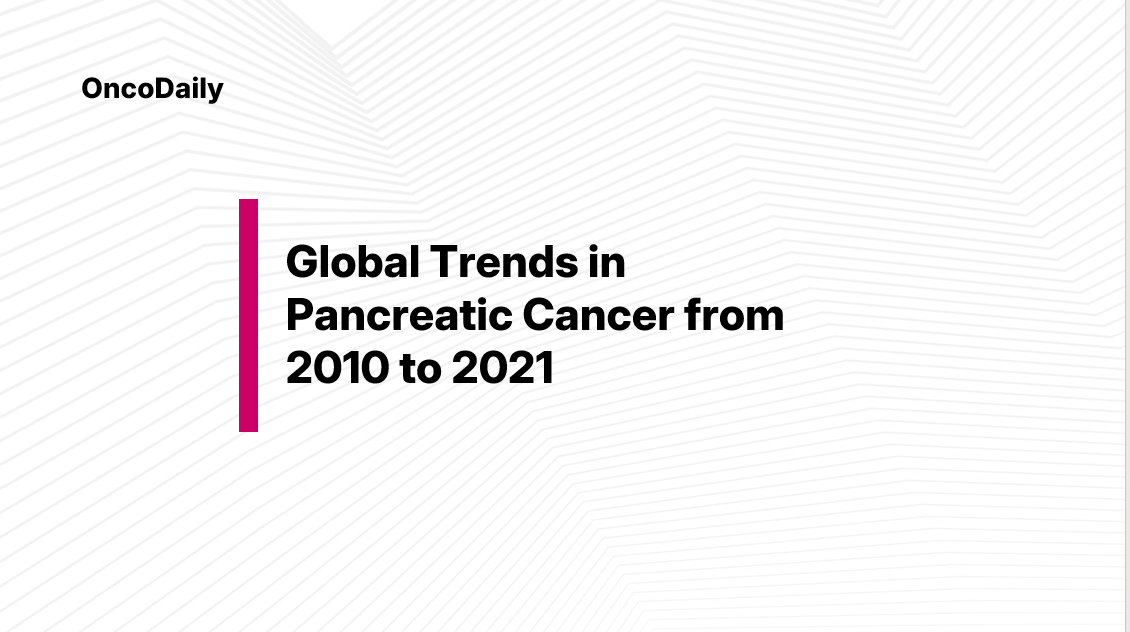Pancreatic cancer (PC) continues to represent a major global health challenge, with its overall burden rising in recent years. To better understand the evolving epidemiology of this disease, a new study comprehensively analyzed temporal trends in incidence, mortality, and disability-adjusted life years (DALYs) from 2010 to 2021. The analysis also examined early-onset pancreatic cancer and variations across global regions and sociodemographic settings.

Using data derived from the Global Burden of Disease Study 2021 methodological framework, researchers assessed both global and regional changes over time, providing a detailed picture of how the burden of pancreatic cancer has evolved during the past decade.
Methods
The study evaluated age-standardised incidence rates (ASIRs), age-standardised death rates (ASDRs), and age-standardised disability-adjusted life years (ASDALYs) as key indicators to assess the burden of pancreatic cancer across time and geography. By applying the methodological framework of the Global Burden of Disease Study 2021, these metrics were used to capture not only how often pancreatic cancer occurs but also its mortality impact and the overall loss of healthy life years associated with the disease.
To identify and quantify temporal changes, the researchers calculated the estimated annual percent change (APC) for each measure. This allowed the team to detect even subtle increases or decreases in trends over the 11-year period, both globally and within regions grouped by sociodemographic index (SDI)—a composite indicator reflecting income, education, and fertility levels. This approach provided a consistent and comparative understanding of how pancreatic cancer incidence, mortality, and disease burden have evolved across countries with differing levels of development and healthcare capacity.
Results
From 2010 to 2021, the global ASIRs, ASDRs, and ASDALYs due to pancreatic cancer remained stable. When analyzed by sex, however, the study found a gradual increase among females, with ASIRs rising by an APC of 0.18% and ASDRs by 0.14%, while rates among males remained stable during the same period.
In contrast, among young adults, the estimated APCs for ASIRs, ASDRs, and ASDALYs decreased, suggesting a reduction in early-onset pancreatic cancer during this timeframe.
At the regional level, ASIR increased across most world regions, with the highest rise observed in Southeast Asia (APC: 1.62%).
When categorized by sociodemographic index, both ASIRs and ASDRs increased across all SDI levels, with the largest increases observed in low-SDI countries (ASIR APC: 1.52%; ASDR APC: 1.53%).
Conclusion
Overall, the findings indicate that although global age-standardised rates of pancreatic cancer have remained relatively stable from 2010 to 2021, the absolute number of new cases and deaths continues to increase. This reflects the expanding global burden of the disease, as more individuals are being diagnosed and affected each year.
The analysis also highlights marked regional and socioeconomic disparities in pancreatic cancer trends. While incidence rose in most parts of the world, the increase was particularly evident in low-SDI countries, where both incidence and mortality showed the highest estimated annual percent changes (ASIR APC: 1.52%; ASDR APC: 1.53%). These results point to widening inequalities in cancer outcomes, suggesting that populations with limited healthcare resources are experiencing a faster rise in disease burden compared to higher-income regions.
According to the study’s conclusions, these patterns emphasize the urgent need for localized, region-specific interventional strategies. Such approaches are essential to address the growing number of pancreatic cancer cases and deaths, especially in settings with limited access to prevention, diagnosis, and care. Tailoring actions to the needs and capacities of each region will be critical to effectively managing this global public health challenge and reducing the disparities that continue to shape pancreatic cancer outcomes across the world.
You can read the full abstarct here.
